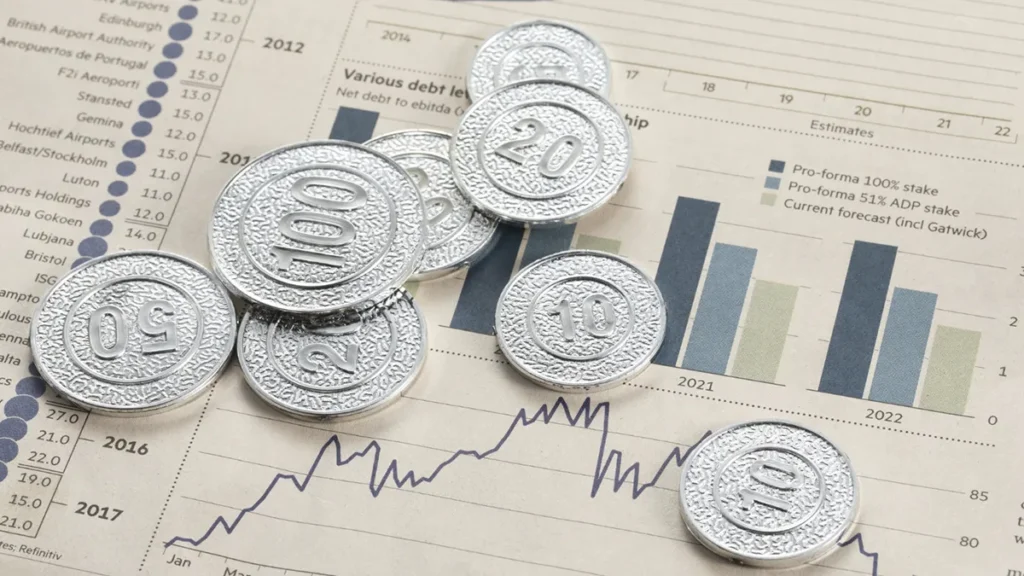When I think about investing my money I always consider how quickly I can turn that investment back into cash. Liquidity plays a huge role in my decisions because sometimes I might need funds fast for an emergency or a new opportunity.
Not every investment offers the same level of flexibility. Some assets let me cash out in seconds while others can tie up my money for years. If you’ve ever wondered which investments are the hardest to sell quickly you’re not alone. Let’s explore which options have the least liquidity and why that matters for anyone looking to grow their wealth.
Understanding Investment Liquidity

Understanding-Investment-Liquidity
Investment liquidity measures how easily I can convert an asset into cash without affecting its price. Highly liquid assets include cash, stocks, and money market funds, where transactions finish in seconds or days. Illiquid investments, like real estate or collectibles, may take weeks, months, or even years to sell at market value.
I assess liquidity by analyzing factors such as trading volume, market demand, and transaction costs. For example, stocks traded on the NYSE offer higher liquidity due to robust daily volumes, while artworks and private business interests usually experience infrequent transactions and wide bid-ask spreads.
The following table compares common investments and their liquidity attributes:
| Investment Type | Typical Time to Liquidate | Average Transaction Cost | Example Asset |
|---|---|---|---|
| Cash | Immediate | None | Checking account |
| Publicly-traded Stock | 1-2 days | Low (brokerage fees) | S&P 500 stock |
| Mutual Fund | 1-3 days | Low (redemption fees) | Equity mutual fund |
| Real Estate | Weeks to months | High (6-10% of value) | Residential home |
| Art & Collectibles | Months to years | High (auction fees) | Sculpture, painting |
| Private Equity | Years | High (management fees) | Venture capital fund |
Transaction speed and cost vary significantly among assets. Market conditions and investor demand further influence the effective liquidity I experience. For instance, a surge in sellers during a market downturn decreases the liquidity—selling real estate or rare collectibles becomes even slower.
Understanding where each type of investment falls on the liquidity spectrum helps me align my portfolio with my cash flow needs and risk tolerance, as lower liquidity often means holding the asset longer and accepting the risk of delayed access to funds.
Factors Affecting Liquidity in Investments
Several factors influence how quickly I can convert an investment to cash at a stable price. These variables determine the liquidity profile for assets like private company shares, real estate, and collectibles.
Time Horizon
Holding period impacts investment liquidity directly. Illiquid assets such as private equity or private company ownership usually require multi-year commitments, locking up my capital for 5–10 years. Shorter holding periods, like those for publicly traded stocks, increase liquidity since transactions settle quickly and markets operate daily.
| Asset Type | Typical Holding Period (Years) |
|---|---|
| Private Company Shares | 5–10 |
| Private Equity | 7–10 |
| Venture Capital | 7–12 |
| Real Estate | 3–7 |
| Stocks (Public) | 0.01–1 |
| Collectibles (Art, etc.) | 5–20+ |
Market Demand
Buyer and seller activity drives market demand, shaping how easily I can sell an asset. Private company shares and unique collectibles have limited markets and fewer buyers, leading to low liquidity and price unpredictability. In contrast, assets like Treasury bills or major company stocks trade in deep markets with high demand, making them highly liquid.
| Asset Type | Market Depth | Buyer Availability | Liquidity Level |
|---|---|---|---|
| Private Company Shares | Low | Rare | Least Liquid |
| Public Stocks (S&P 500) | High | Abundant | Highly Liquid |
| Real Estate | Variable | Moderate | Low–Moderate |
| Art and Collectibles | Very Low | Occasional | Very Low |
Legal and Transaction Barriers
Regulatory requirements and transaction complexities slow liquidity. Private company shares often come with shareholder agreements or regulatory lock-up periods that restrict sales. Real estate demands lengthy procedures—inspections, negotiations, compliance, and financial approvals. Collectibles may need proven authenticity or face transfer restrictions, further increasing illiquidity.
| Asset Type | Regulatory/Legal Barriers | Transaction Complexity | Typical Sale Duration |
|---|---|---|---|
| Private Company Shares | High | High | Months or longer |
| Private Equity | High | High | Several months–years |
| Public Stocks | Low | Low | Seconds–days |
| Real Estate | Moderate | High | Weeks–months |
| Art and Collectibles | Moderate–High | High | Months |
Types of Investments Ranked by Liquidity
Liquidity rankings for investments show the range between assets that can convert to cash instantly and those that lock up capital for years. This section details each category and provides examples and data comparing their liquidity attributes.
Highly Liquid Investments
Cash and cash equivalents like money market funds and savings accounts let me access funds instantly, with no significant loss of value. Publicly traded stocks and bonds with high trading volumes allow me to sell quickly at market prices.
| Investment Type | Typical Time to Cash | Transaction Costs | Market Depth |
|---|---|---|---|
| Money market funds | <1 day | Very low | Very high |
| Savings accounts | Immediate | None | High |
| Publicly traded stocks | ≤1 day | Low | High |
| Government bonds (short-term) | ≤1 day | Low | High |
Moderately Liquid Investments
Treasury notes with maturities from 2 to 10 years let me access cash by selling in secondary markets, though prices may fluctuate if interest rates change. Commodity futures contracts can be bought or sold with moderate speed, but liquidity depends on contract terms and trading activity.
| Investment Type | Typical Time to Cash | Market Constraints | Price Impact |
|---|---|---|---|
| Treasury notes | 1–2 days | Subject to prevailing interest rates | Moderate |
| Commodity futures | 1–2 days | Varies by contract and market activity | Moderate to high |
Least Liquid Investments
Private equity investments require me to commit capital for 5–7 years or more, with limited or no secondary markets. Venture capital involves years-long development periods, restricting early exit. Real estate needs time for buyer identification and transaction closing, often stretching weeks to months. Art and collectibles involve specialized markets with infrequent buyers. Limited partnerships and hedge funds impose lock-up periods or infrequent redemption windows, delaying cash access.
| Investment Type | Typical Holding Period | Exit Barriers | Secondary Market Exists | Price Transparency |
|---|---|---|---|---|
| Private equity | 5–7 years | High commitment, no market | Rare | Low |
| Venture capital | 5–10 years | Long development, locked in | Rare | Low |
| Real estate | Weeks–months | Transaction complexity | Sometimes | Moderate |
| Art & collectibles | Months–years | Niche market, subjective value | Rare | Low |
| Limited partnerships | Years | Legal restrictions | Rare | Low |
| Hedge funds | Months–years | Lock-up, redemption limits | Rare | Low–moderate |
Which Investment Has the Least Liquidity?

Which-Investment-Has-the-Least-Liquidity
Investments with the least liquidity place significant constraints on rapid access to cash. These assets require extended holding periods, complex sales processes, and often limited market access.
| Investment Type | Typical Holding Period | Sale Process | Market Availability | Liquidity Level |
|---|---|---|---|---|
| Real Estate Properties | 3-12 months | Negotiated, Legal | Limited, Local | Least Liquid |
| Private Equity & Venture Capital | 5-10 years | Contingent Events | No Established Mkt | Least Liquid |
| Collectibles & Alt. Assets | Months-Years | Auction, Private | Niche, Few Buyers | Least Liquid |
Real Estate Properties
Real estate properties restrict liquidity through lengthy transaction times, high costs, and local demand factors. Sales require finding a buyer, negotiations, inspections, and legal work. Turning a property into cash may take several months, and transactional fees can reach 5-10% of value. Illiquidity increases in down markets or less active regions.
Private Equity and Venture Capital
Private equity and venture capital investments bind capital for 5-10 years, as they’re structured with multi-year lock-up periods. Investors can’t sell shares easily since no centralized secondary market exists. Exits mainly occur through company sales or IPOs, which are uncertain and infrequent. For example, the average private equity fund holds investments for 5-7 years, according to Investopedia.
Collectibles and Alternative Assets
Collectibles and alternative assets, such as art and antiques, tie up funds because of subjective pricing and limited buyer pools. Auctions or private sales often take months or years, with no price transparency or guaranteed demand. Asset valuation also poses liquidity risk due to fluctuating trends or collector preferences, as seen in art markets tracked by the Mei Moses All Art Index.
Risks and Considerations of Illiquid Investments
Illiquid investments come with distinct risks and challenges that set them apart from more liquid assets.
- Limited Access to Cash: Lock-up periods range from 5 to 10+ years for direct ownership in private companies, private equity, and venture capital. Real estate and collectibles may take months or years to convert to cash, especially in weak markets.
- Potential for Price Discounts: Forced sales of illiquid assets often result in deep price discounts, as seen in private company shares or niche art, due to the limited buyer pool and negotiation leverage.
- Complex Transactions: Selling real estate or private business interests involves negotiation, regulatory filings, and legal processes. Collectibles and partnership interests typically require third-party appraisals and compliance steps, which delay sales.
- Valuation Uncertainty: Illiquid asset valuations fluctuate more than public market securities. Art, collectibles, and private equity stakes often lack transparent market pricing.
- Market Risk Exposure: Market downturns can depress illiquid asset prices for prolonged periods. Investors may miss opportunities or face losses if forced to sell during low-demand conditions.
- Redemption Restrictions: Hedge funds and limited partnerships may restrict withdrawals, locking in capital for defined intervals (quarterly, annually, or longer).
- Higher Transaction Costs: Legal fees, commissions, and holding costs, especially in real estate and private investments, frequently exceed those for public securities.
Liquidity Risk Profiles by Investment Type
| Asset Type | Typical Lock-Up / Sale Period | Valuation Frequency | Potential Price Discount When Selling Quickly | Notable Transaction Barriers |
|---|---|---|---|---|
| Private Business | 5–10+ years | Infrequent/Negotiated | High | Regulatory, partnership restrictions |
| Real Estate | 3–12 months | Appraisal-based | Moderate to High | Closing process, inspections |
| Art & Collectibles | Months to years | Subjective/Appraisal | High | Authentication, niche market |
| Hedge Funds | 1–3 years redemption | Quarterly+ | Moderate | Lock-up periods, fees |
| Small-cap Stocks | Immediate–days | Real-time | Low–Moderate | Thin trading, volatility |
Reference: National Bureau of Economic Research, CFA Institute, Preqin, Art Basel
Illiquidity has both diversification appeal and risks. Diversified portfolios may perform better long term with a mix of liquid and illiquid holdings if cash flow needs and risk tolerance permit holding illiquid assets through multiple market cycles.
When to Consider Low-Liquidity Investments

When-to-Consider-Low-Liquidity-Investments
Considering low-liquidity investments aligns with a long investment horizon and higher risk tolerance. Investors often accept illiquidity—seen in private equity, venture capital, direct private company ownership, and real estate—when seeking higher potential returns or greater portfolio diversification.
Suitable Scenarios for Low-Liquidity Investments
- Pursuing higher return potential: Illiquid assets commonly offer an “illiquidity premium,” compensating for delayed access and higher risk (KPMG, 2023). Private equity and venture capital funds historically outperformed public equities over 10-year spans.
- Planning for long holding periods: Real estate and private equity investments bind capital for 5-10 years or longer. Selling shares or properties may require several months due to market complexities and regulatory challenges.
- Avoiding short-term cash needs: Investors who don’t anticipate large immediate cash requirements, such as for emergencies, can allocate more to illiquid assets.
- Building portfolio diversification: Illiquid investments like art, collectibles, and direct business ownership help reduce portfolio correlation to public market swings.
Illiquidity Risk vs. Return Characteristics
| Investment Type | Typical Holding Period | Exit Difficulty (Relative) | Average Illiquidity Premium |
|---|---|---|---|
| Private Equity | 7-10 years | High | 3% – 5%/year |
| Venture Capital | 8-12 years | Very High | 4% – 6%/year |
| Direct Private Company Shares | Variable, often 5-15y | Very High | Not consistently quoted |
| Real Estate | 3-12 months for sale | High | 1% – 3%/year |
| Art & Collectibles | Months to years | Extreme | Unquantified |
Source: KPMG, CFA Institute, Preqin (2023)
Liquidity Needs Assessment Factors
- Liquidity constraints: Low-liquidity investments suit those with predictable income or substantial liquid reserves (e.g., cash, bonds).
- Tolerance for delayed exits: Investors with flexibility on when and how to exit assets manage illiquidity risk more effectively.
- Regulatory and tax considerations: Selling private companies or real estate often triggers additional legal and tax review, further delaying access to cash.
Illiquid Asset Examples
- Real estate transactions in major US markets (e.g., New York, Los Angeles) show median time-to-sale of 70-120 days (National Association of Realtors, 2023).
- Private equity fund redemption typically unavailable before fund maturity; secondary market sales, if allowed, may take months and require price discounts (Preqin, 2023).
Investing in low-liquidity assets makes sense when long-term goals, capacity for risk, and stable cash flow outweigh the need for immediate liquidity.
Conclusion
Choosing investments with the least liquidity isn’t just about chasing higher returns. It’s about understanding your own financial goals, risk tolerance, and cash flow needs. I always weigh the trade-offs before locking away my capital for years or navigating complex exit processes.
Balancing liquid and illiquid assets in my portfolio helps me stay prepared for both opportunities and unexpected expenses. By knowing where my investments stand on the liquidity spectrum, I can make smarter decisions that support my long-term financial health.
Frequently Asked Questions
What is investment liquidity?
Investment liquidity refers to how quickly and easily an asset can be converted into cash without significantly impacting its value. Highly liquid assets, like cash or stocks, can be sold quickly, while illiquid assets, like real estate, may take a longer time and might involve higher transaction costs.
Why is liquidity important when making investment decisions?
Liquidity is important because it affects how fast you can access cash for emergencies or new opportunities and helps manage financial risks. Highly liquid investments offer flexibility, while illiquid investments may tie up your money for longer periods.
Which investments are considered the most liquid?
The most liquid investments include cash, money market funds, and publicly traded stocks. These assets can typically be converted into cash quickly and with minimal transaction fees, making them ideal for short-term needs or emergency situations.
What are the least liquid types of investments?
The least liquid investments include real estate, private equity, venture capital, collectibles, and some alternative assets. These often require long holding periods, have limited buyers, and can involve complex, time-consuming selling processes.
How does market demand impact liquidity?
Market demand greatly impacts liquidity. Assets with high demand, such as widely traded stocks, are easier to sell quickly. Less popular assets, like collectibles or private company shares, may be harder to sell and take more time to convert to cash.
What risks are associated with illiquid investments?
Illiquid investments carry risks like limited access to funds when needed, potential for selling at a price below market value, high transaction costs, and uncertain valuations. These factors can lead to financial strain if quick cash is required.
When should investors consider low-liquidity investments?
Investors should consider low-liquidity investments if they have a long investment horizon, higher risk tolerance, no immediate need for cash, and are seeking potentially higher returns or portfolio diversification.
How long does it typically take to sell illiquid assets like real estate or private equity?
Selling illiquid assets can take anywhere from several months to several years. Real estate may take 3-12 months to sell, while private equity and venture capital investments can tie up funds for 5-10 years.
Can illiquid investments improve portfolio performance?
Yes, including some illiquid assets can improve long-term portfolio performance, as they may offer higher returns (illiquidity premiums) and diversify investment risk, provided you can manage your cash flow and risk tolerance.
What factors should be considered before investing in illiquid assets?
Before investing in illiquid assets, consider your cash flow needs, emergency fund availability, investment time horizon, risk tolerance, transaction costs, and the complexity of the selling process. Always ensure these investments align with your overall financial goals.

